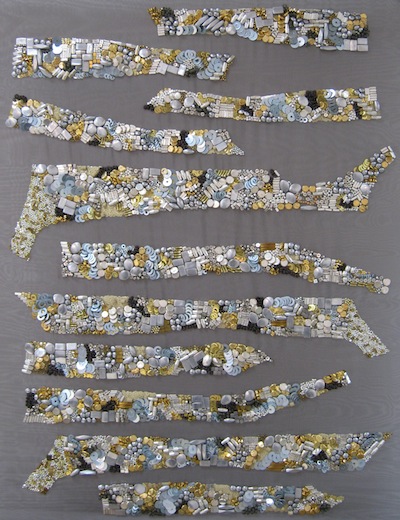French Couture Embroidery and Tambour Beading techniques are the trademark of companies like Lesage, perhaps the most famous of all couture embroidery houses in Paris. The French method uses the Luneville or Tambour hook to apply sequins, beads, appliqué fabrics and do surface stitching to name just a few of the techniques that make up the art form.
The techniques require more patience than skill to gain proficiency. Once mastered, the work progresses rapidly. These techniques can be applied to a variety of projects from simple motif to fully beaded and embroidered garments.
For the past two summers, visiting designer Robert Haven has come to the fashion school to teach two levels of the art form, a beginner level that covers the basic chain stitch for applying seed beads, bugle beads, sequins and for doing surface stitching. “My goal is to provide a technical foundation in the stitches and techniques and then encourage the students to explore the possibilities of how the techniques could work for them,” said Bob.
The second, advanced level class added additional and more complex stitches to the basics. The class was taught how to appliqué fabric into a design, work with unusual materials like raffia, chenille and metal threads to create three-dimensional elements to extend off the surface of the piece. They also learn the “pulled stitch” to create satin stitching.
Tremaine Tillman incorporated what she learned from the class in the wedding gown she created for BRIDES magazine Operation Dream Dress competition and for the upcoming September New York Fashion Week show, Maria Korovilas created metal encrusted pieces and details to her collection which took over 600 hours to complete.
For more photos of Maria’s work, follow the jump.





